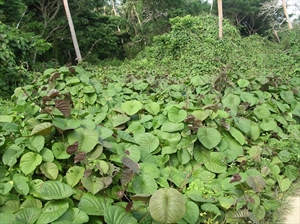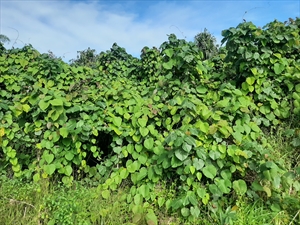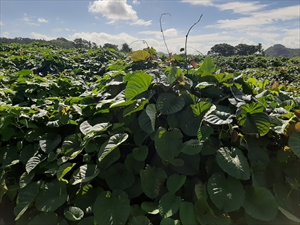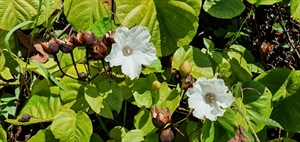- Restricted. South and Southeast Asia, East Africa, North America (Canada), Oceania. In many Pacific islands.
- Important very fast-growing invasive weed dominating bush fallows and forests, becoming especially aggressive in disturbed areas, smothering crops and logged forests, forming dense canopies stifling regrowth. One of top10 weeds of Solomon Islands, Vanuatu.
- Vines, smooth, woody at the base, up to 30 m long growing from underground tubers. Leaves, alternate along stems, almost round, up to 30 cm across, purple-veined below, with leaf stalk attached to lower surface. Flowers, funnel-shaped, white, 5-6 cm long. Seeds, furry, 1-4 inside a round capsule.
- Spread: by fast-growing vines; seed; stem pieces; on machinery; trade in ornamentals; and use as a ground cover.
- Biosecurity: high risk of introduction. On Global Invasive Species Database of alien invasive species (IUCN, 2020). Seed available on internet.
- Biocontrol: no information available.
- Cultural control: hand-pulling; slashing; mowing; allow cattle to eat it; reducing spacing in forest plantations to increase shade; vehicle hygiene to remove seed.
- Chemical control: in Australia (foliar): MCPA. Elsewhere (foliar): 2,4-D; dicamba; triclopyr; picloram; glyphosate (e.g., Fiji); triclopyr + picloram. For cut-vine application: triclopyr; glyphosate (e.g, Fiji).










